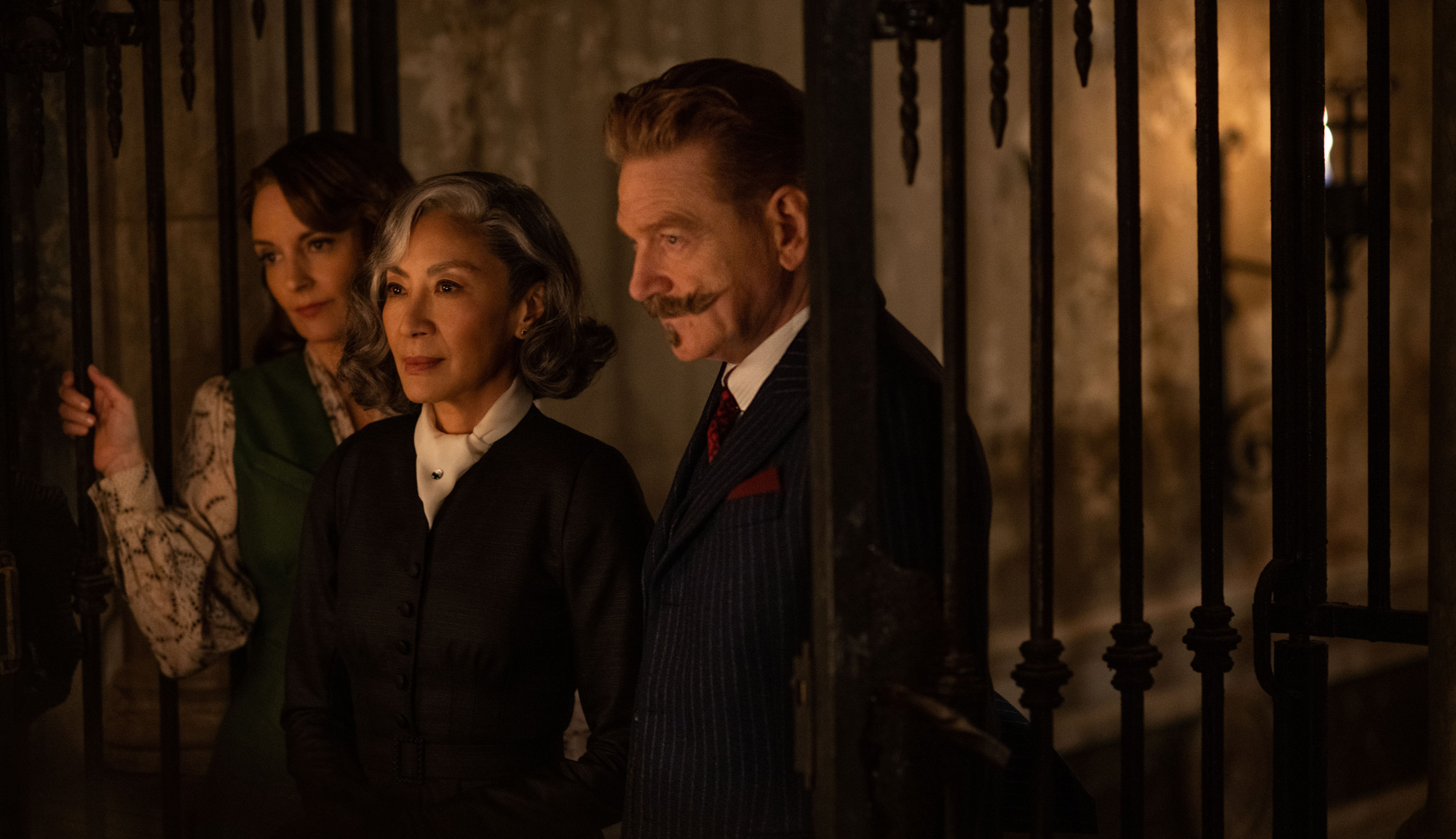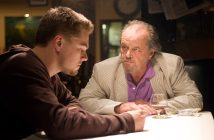
It’s hard not to base expectations on what’s come before, especially in a movie franchise. The fairest thing to do is approach each film with the hope that it’s good and with no assumptions otherwise. But that’s difficult when it’s the third entry of a series and the previous two were not that good. “Murder on the Orient Express” and “Death on the Nile” had interesting costumes and set designs, but it wasn’t enough to cover up the hollow story and performances delivered by an impressive but disengaged cast. Director and star Kenneth Branagh tried to use the lavish decorations, star power and hints of charm to cover up the boring black holes at the center of the movies but was unable to prevent them from becoming uninteresting slogs. With that previous distaste in mind, it is a welcomed surprise that “A Haunting in Venice,” the third film in Branagh’s franchise featuring iconic detective Hercule Poirot, is a very entertaining watch.
It’s Halloween night in 1947 Venice and former detective Hercule Poirot (Branagh) is being forced out of retirement by his old acquaintance, author Ariadne Oliver (Tina Fey). She wants Poirot to help debunk spiritualist Mrs. Reynolds (Michelle Yeoh), who Oliver thinks may be the real thing. The séance is held at the quickly deteriorating palazzo of opera diva Rowena Drake (Kelly Reilly), who is orchestrating the event in an attempt to speak with her deceased daughter, Alicia. People from Alicia’s past are invited to take part in the event, witnessing the mysterious divinations of Reynolds, only to have the festivities end with a corpse. Locking down the house, Poirot is hellbent on finding the killer while also navigating the seemingly supernatural elements that the skeptic experiences.
The third time’s the charm for returning director Branagh and writer Michael Green, as this latest installment is streets ahead of what came before. “A Haunting in Venice” features a strong cast with excellent chemistry, a terrifically gothic location that helps create a palpable mood and engaging dialogue that serves the genuinely intriguing mystery at the heart of the film. Not everything completely works, but it’s still an entertaining detective story that finally makes proper use of its source material and the inherent charm of its star. The conclusion still suffers a bit from the Achilles’ heel of all Agatha Christie plots, wherein the discovery is seemingly based on information that the audience could never know (and may not even be based in reality), but luckily, there is more film after the denouement, so it doesn’t go out on a convoluted note but rather multiple satisfying scenes. It doesn’t quite stick the landing, but “A Haunting in Venice” does just enough that the taste left in the audience’s mouth is a delectably sweet one.
“Murder on the Orient Express” and “Death on the Nile” had good production and costume design, but they always felt flat, their ornate trappings covering feeling like a decoy to obscure the hollowness at the center of the movies. The broken-down palazzo where most of this third installment takes place is a rich character unto itself, with its massive rooms and pervasive shadows. It evokes a huge rotting building that could very well be home to a host of trapped ghosts. The film’s location is coupled with the story being set on Halloween night, complete with period-appropriate costumes, festivities and decorations, which infuses it with a constant dreadful mood perfect for the spooky season. With candles and such being the main “source” of lighting, cinematographer Haris Zambarloukos depicts beautifully composed scenes that seemingly threaten to engulf the cast in its darkness. Zambarloukos was the DP on the previous two Poirot films, so it’s odd that it took a third outing for him to create terrifically framed shots that feel genuinely artistic as opposed to relying on star power or faux opulence to communicate emotions.
While it’s not as much of a layered portrait of the character as “Death on the Nile,” Poirot is much more interesting in “A Haunting in Venice.” That previous entry allowed Branagh to flex his dramatic muscles while exploring the detective’s tragic backstory, but here, the Belgian genius is much more charming, feeling himself as he works feverishly to uncover the truth. His delivery of Green’s comic lines lands with actual laughter, whereas before it all felt like an affectation or forced comedy relief. Fey’s mid-Atlantic accent is perfectly executed, and the ratatat rapport between Oliver and Poirot provides some of the best moments in the movie. Most of the performances here are much more subdued (yet, oddly more fleshed out) than the casts of the other two mysteries, but they feel less like broad archetypes and more like people.
“A Haunting in Venice” isn’t just a vast improvement on what’s come before — it’s a very entertaining film in its own right. This is what the Poirot tales should have always been: beautifully depicted scenes in lush locations featuring compelling performances led by an irresistibly charming detective with an engaging mystery that propels the audience through the movie. Hell, that is what most whodunnits should be. The setting, both location and time, expertly establishes the mood, which allows the mostly capable cast to navigate with their own dynamic turns. The script is tight, with only a few missteps, crafting interesting dialogue to illustrate intriguing characters. It’s unfortunate that it took three tries to get here, but at least Branagh finally arrived at a genuinely entertaining cinematic experience.
Starring: Kenneth Branagh, Tina Fey, Michelle Yeoh, Jamie Dornan, Kelly Reilly
Director: Kenneth Branagh


